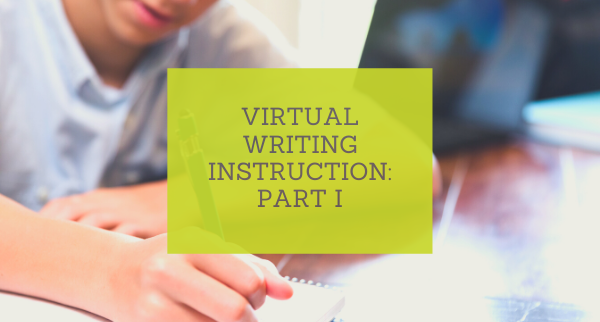Virtual Writing Instruction: Part I
Across school districts, students’ grades, scores, and standardized test results indicate a widespread drop in foundational skills, some of the more critical skills affiliated with academic writing. Writing is not just an English-specific necessity. The ability to construct cohesive, clear, organized thoughts in written form is essential for all aspects of college and career readiness. As educators, we must prioritize these foundational writing skills to ensure that, even in the midst of virtual or hybrid learning, students are still being set up for success.
Daily cross-curricular opportunities
Writing is one of those skills that is strengthened by repetition and practice. Exposure to different styles of writing and opportunities to compose different written forms helps students to recognize the importance of writing in all subject areas. Therefore, teachers should provide opportunities for students to practice composing various genres and for different purposes. These do not necessarily have to be long, involved essay prompts; teachers can use these ideas as warm-ups, exit tickets, lesson activators, etc.
For example, science teachers might ask students to write and submit lab reports, compose directions for science experiments, or draft project proposals for a final project. History, civics, or social studies teachers should consider prompts that require students to compare and contrast two or more cultures, time periods, land forms, or branches of government. Math teachers can help students with procedural or sequential writing skills by asking them to compose an error analysis for any questions that they missed on a quiz or assessment. For a task such as this, students are subconsciously learning the skills necessary to craft written work that follows a problem-solution or cause-effect format. The key here is to demonstrate that writing skills, even short practices, lend themselves to all content areas, not just English.
Peer review
Peer review sessions are extremely beneficial, especially during virtual learning where students do not have day-to-day interactions with their peers. Dissecting someone else’s work can be a very enlightening practice for young writers. It allows them to see how another student interpreted and approached the same task in relation to their own response. Viewing another’s writing also sheds light on different writing styles, provides ideas for varying sentence structure, and demonstrates how others interpreted a text or quote. In evaluating another’s writing, students begin to grasp, not only how their own writing measures up, but how an instructor might evaluate a written response. It forces students to consider the prompt, the rubric, and the overall objectives with regard to their final composition. Peer review sessions also prompt student discourse, which, during these trying times, can help stimulate social skills, collaboration, and motivation.
Formative feedback
By embedding formative feedback into weekly writing instruction, educators send the important message to students that writing is a fluid process—students are not expected to craft perfect writing on their first, or even second attempt. One of my most beneficial practices to help students with essay writing is to formatively assess the introductory paragraph first, before students continue on with their entire essay. By pumping the breaks and providing specific feedback on each student’s intro paragraph, I am able to accomplish several things at once.
First, looking at the intro paragraph gives me an inside view of the foundation of their essay; I’m able to see students’ interpretation of hook statement, bridge statement leading into their thesis, and the final thesis statement, around which the entire essay will be framed. If students’ introductory paragraphs are a mess in any one of these categories, I can quickly provide necessary feedback and scaffolds for them to revise and reset before they have gone too far down the wrong path. Looking at the intro paragraph also shows me whether students actually understand the writing prompt or not. If multiple students seem to be off track or missing the mark, I can easily intervene and provide supports, interventions, and reteaching to ensure that everyone understands the prompt and how to approach it.
In part two of Virtual Writing Instruction, we’ll explore the impact of providing student choice, creating the necessary scaffolding for struggling writers, using virtual sessions to instruct using teacher models, and building online portfolios for student writing.








